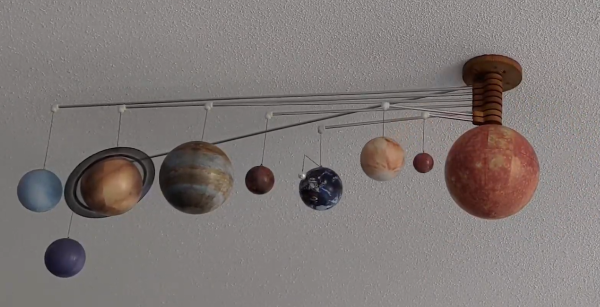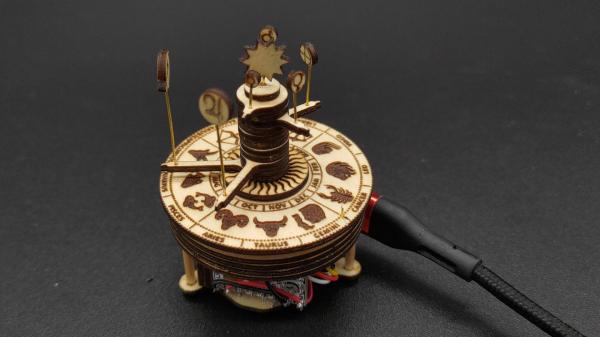The major objects in our solar system orbit along the plane of the ecliptic, plus or minus few degrees, and it turns out most exoplanet systems are the same — pretty flat, with maybe one highly-inclined outlier. But at [The 5439 Workshop], they don’t care about these details: [5439] has come up with a mechanism to drive inclined orbits in an orrery, and he’s going to use it. The star is exploding, too, because why wouldn’t it be?
While the cinematography of this build video might not be to everyone’s taste, it’s worth watching to see the details of the project. The sliding mechanism to “explode” the star by sliding plates across each other is quite well-done, although perhaps not much not designed for assembly (we’re quite impressed he got it together). It isn’t quite the iris we had expected, as there’s a double-ratchet inside to drive the slow collapse/fast expansion dynamic [5439] is going for. It looks more like the breathing mode of a cepheid variable star than an explosion to us, but it’s still a fascinating piece of laser-sintered aluminum.
The driving mechanism for the inclined orbits is fairly simple, but also worth examining, as we’re not aware of anyone having used it before. The gear rings holding the planets are tilted, and are driven by straight vertical shafts via gears that pivot on knuckle joints. It’s not a revolutionary design, but it’s a big part of what makes this build unique. Since the solar system is very flat, clockwork orreries tend not to bother showing orbital inclination at all. Given the way planets are believed to form from a protoplanetary disk, a system with this many planets in such differing orbital planes seems unlikely to occur naturally, but it certainly adds visual interest.
We like model solar systems around here, be they made from brass and steel, molded plastic LEGO bits, or 3D printed and CNC routed aluminum like this one. That you can sit a coffee mug on it is just bonus. Continue reading “An Improbable, Doomed Star System In A Clockwork Coffee Table”



 Peek behind the polished face and you’ll find a mechanical sleight of hand. This isn’t your grandfather’s gear-laden
Peek behind the polished face and you’ll find a mechanical sleight of hand. This isn’t your grandfather’s gear-laden 













